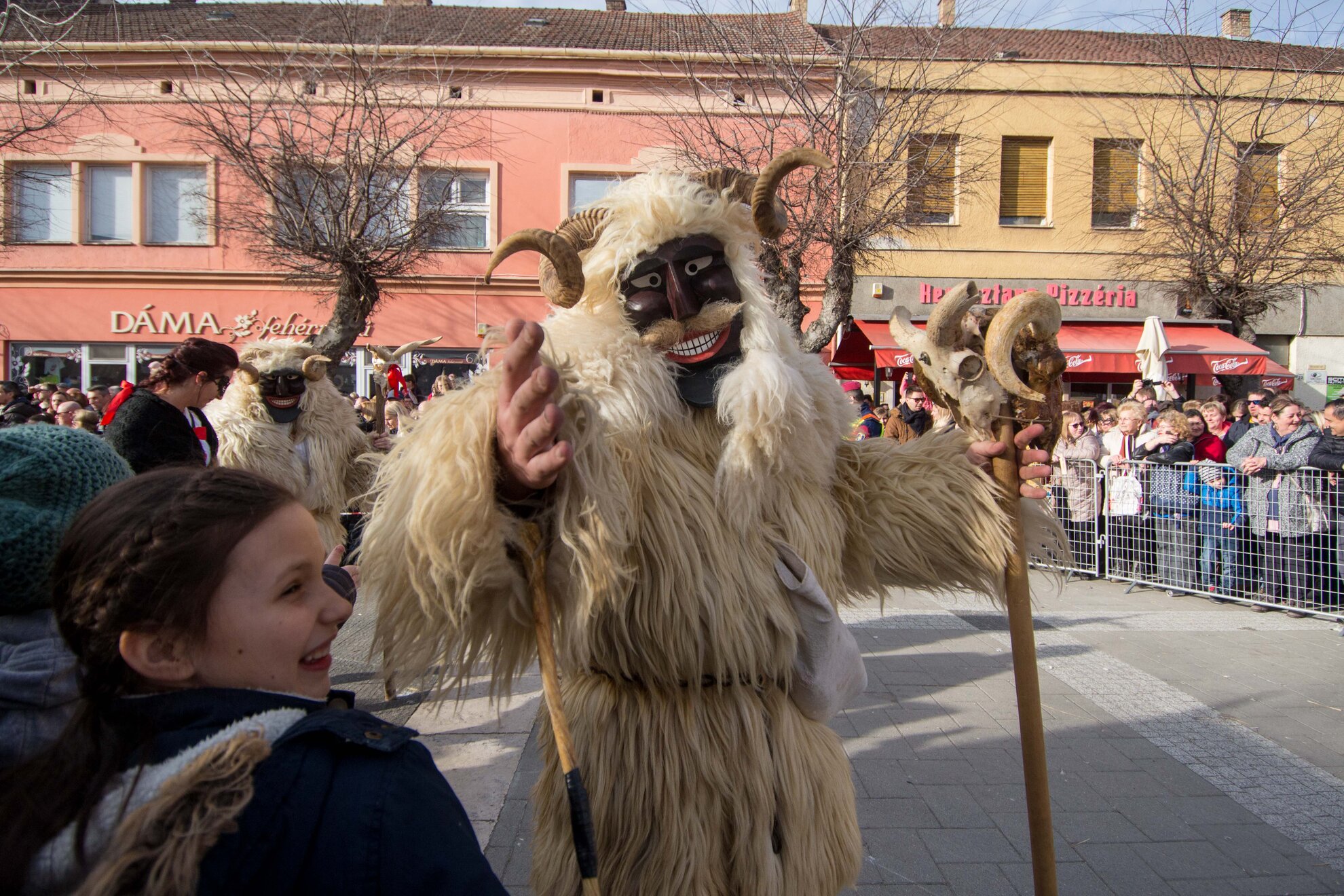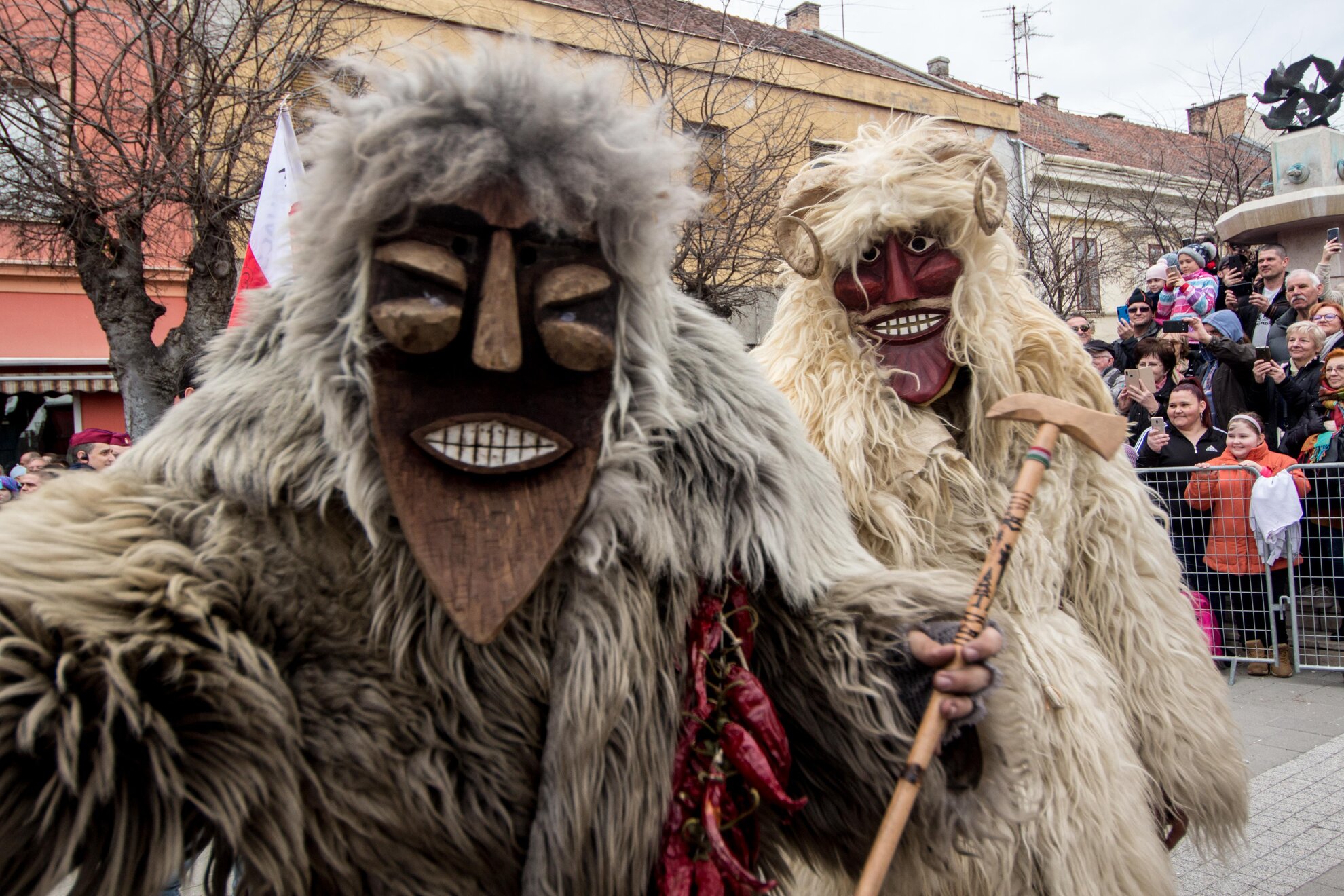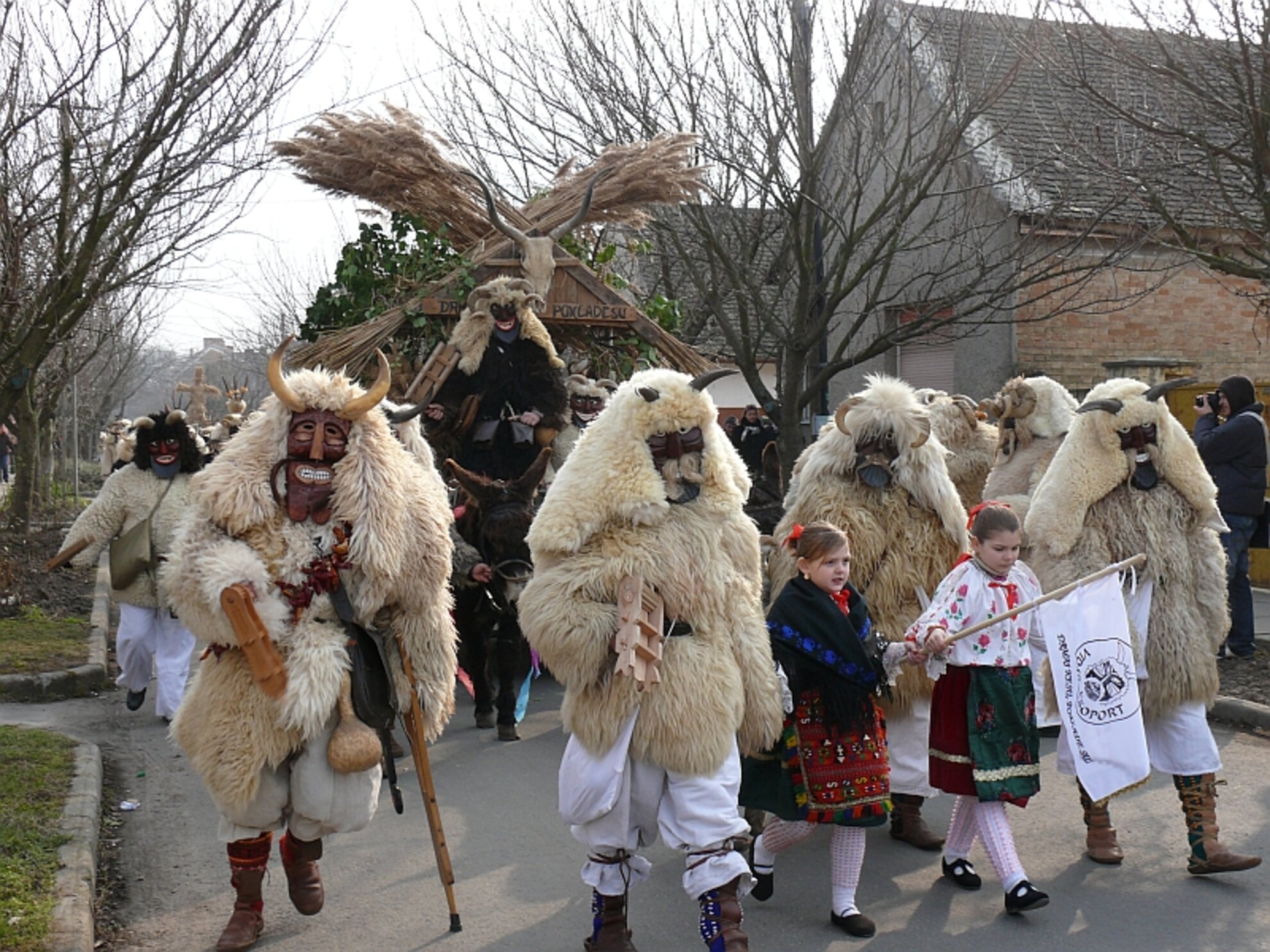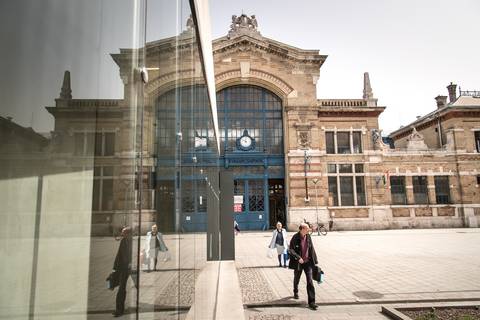Get your shiny dance shoes and prepare your costume as Farsang season is around the corner. This time of year in the run-up to Lent means lavish parties and carnivals. Behind closed doors, potential Mr Darcies and Ms Bennets sway in disguise across the dance floor practising palotás, the uniquely Hungarian dance. While other nations celebrate with huge fiestas, the southernmost Hungarian town of Mohács chases away winter with spooky masks and furry costumes as part of Busójárás. Come and discover the story of this joyful season through our weekly language series!
Diving into the niceties of vocabulary, the word farsang comes from the German vaschang which is originally a slang variant of Fasching.
As this might suggest, it’s similar to the English 'fasting', signifying
the period before Lent, when loud festivities took place. It derives from the
tradition that Catholics in Hungary and elsewhere fast from meat and parties for 40 days before Easter.
In Hungary, the tradition of Farsang dates back to
medieval times and refers to the season when eligible men organised balls and
kept an eye out for prospective wives. At the same time, women sent their
favourite flowers to potential suitors and if the affection was mutual, then
flowers were put on the gentleman’s hat.
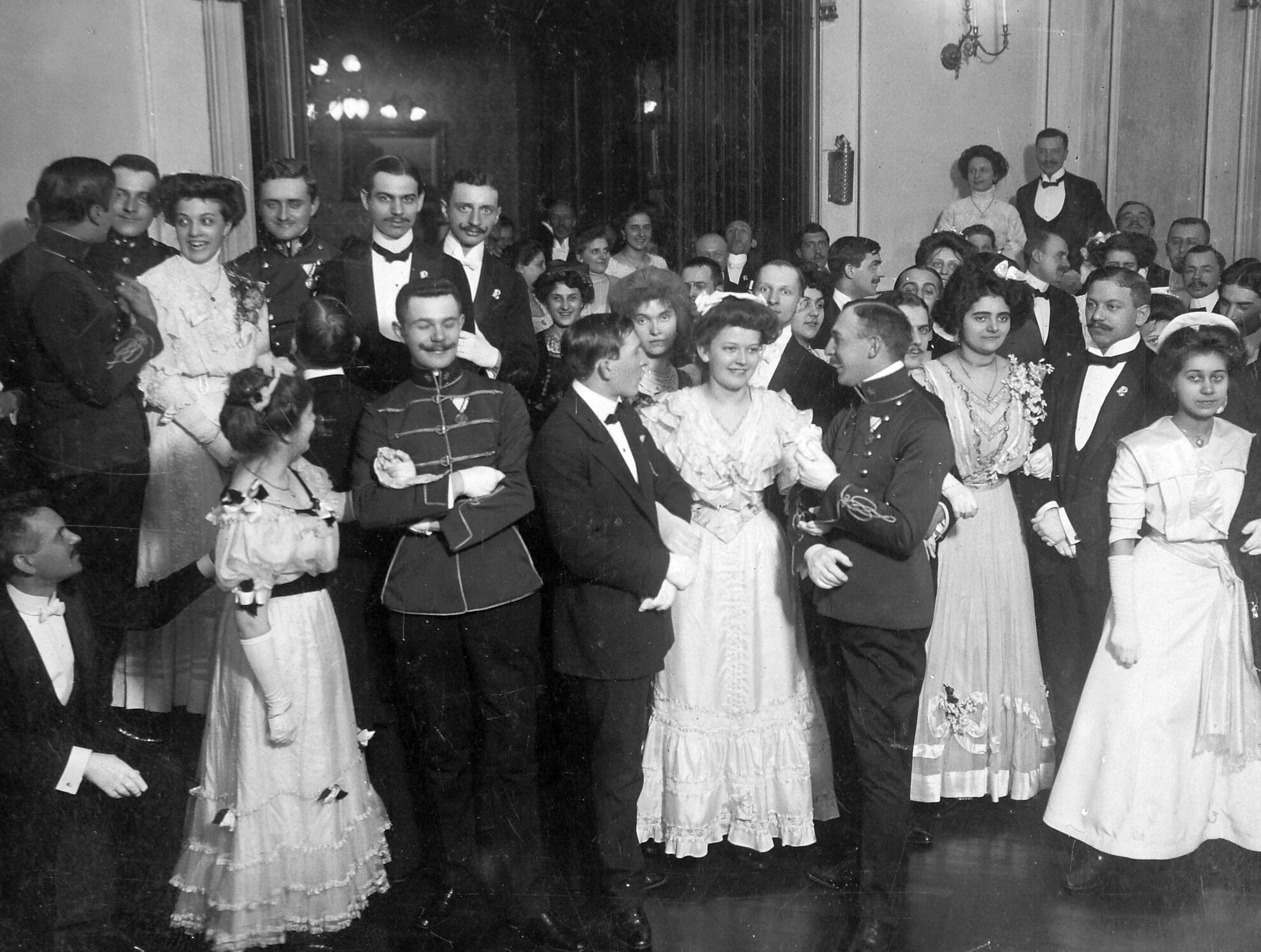
A true Hungarian
way of celebrating the Farsang season involved a special dance, the Palotás.
The term comes from the Hungarian word palota, meaning palace, as it was first mainly danced in elegant ballrooms. By the 19th
century, it had become the most popular opening dance of Hungarian balls and
festivities.
Urban legend also says that one of Hungary’s most influential
politicians in the 19th century, the much-travelled István Széchenyi who conceived of the Chain Bridge, once
performed Palotás in England and said to his company: “This is my dance!” – emphasising the strong bond between the steps and Hungarian identity.
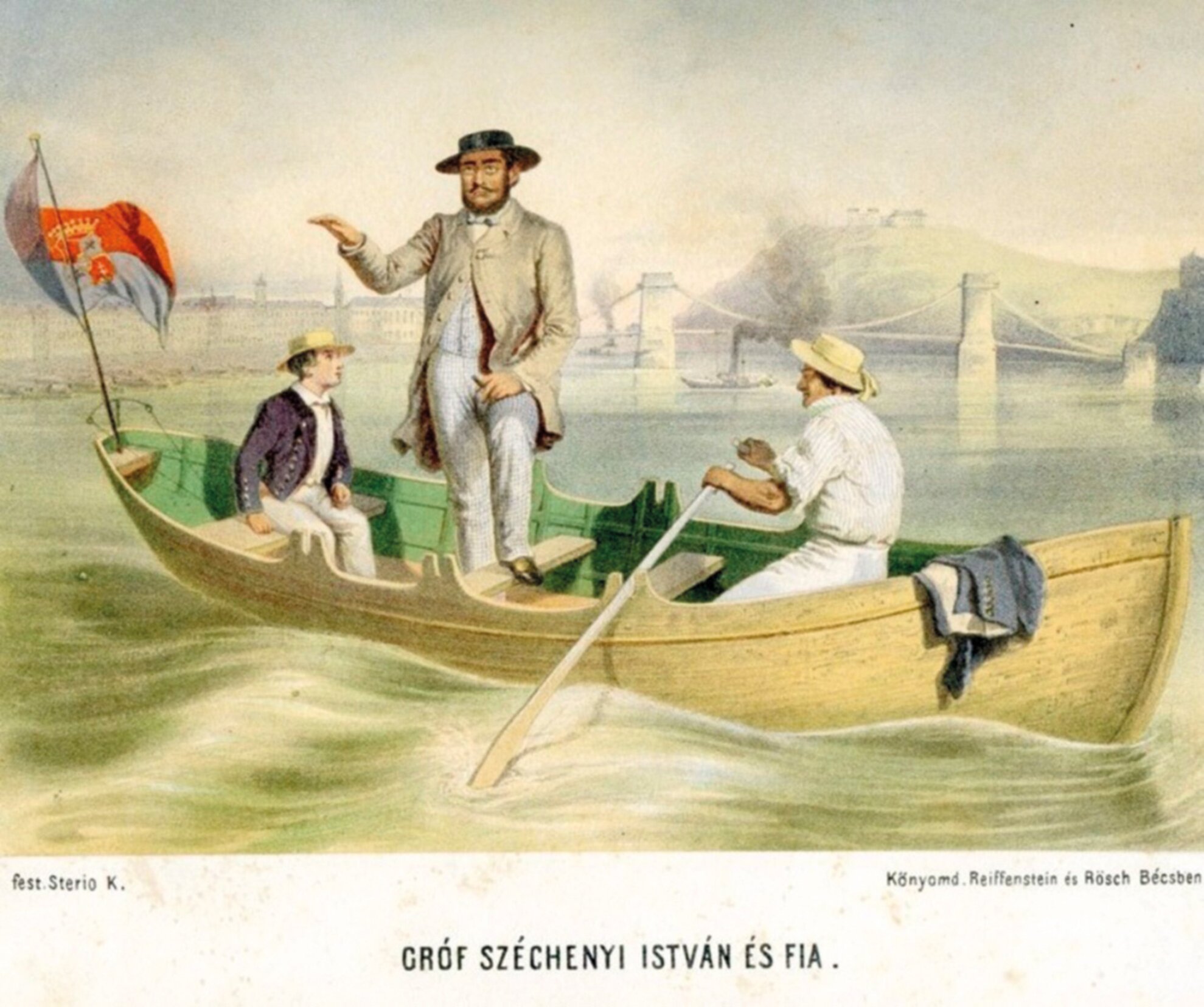
A discussion of Farsang would be incomplete without mention of busójárás in the southernmost town of Mohács. This
celebration is similar to Halloween, as people
dress up in scary costumes and put on beastly masks – but here the purpose is to chase away winter.
These monstruous creatures are the so-called busók, which protect the town
like a bunch of Mr Incredibles.
Busójárás is probably the highlight of
the season, a traditional street carnival of Hungarians closest to the Slav world. It's so culturally remarkable that
it was recognised by UNESCO and declared to be a HUNGARIKUM, an iconic part of Hungarian culture.
So, no room for hesitation – choose your party and get involved! For more info about Busójárás, see
our article & video here.
